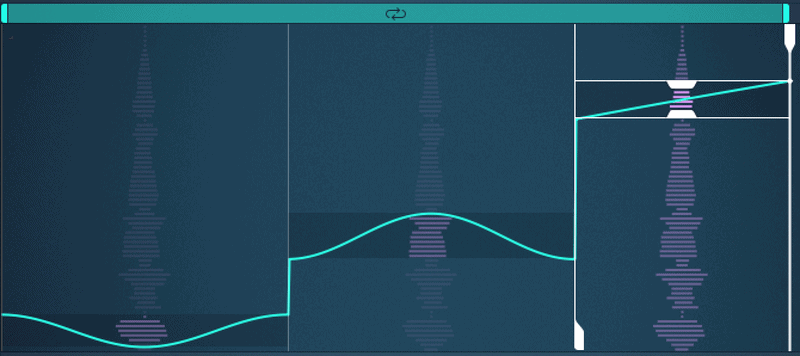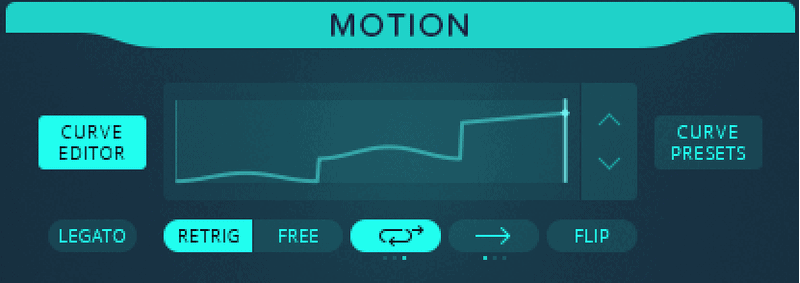Granular synthesis can seem impossible to understand. But it’s actually pretty simple!
Today you’ll learn how granular synths work and how you can use them in your music. You’ll be ready to create super unique synth sounds.
What Is Granular Synthesis?
Granular synthesis creates new sounds out of grains. Those are little snippets of an audio sample.
A set of grains is called a graintable. By manipulating the grains, you can create entirely new sounds.
Granular synthesis isn’t super popular right now. Maybe because it seems daunting at first glance.
But with a little practice (and the info from this guide), you’ll be making unique sounds in no time.
Granular and additive synthesis have incredible potential for creating completely unique sounds. Which is why I think they’ll both become more important over time.
So get ahead of the curve now by learning how to use these powerful synths!
How Does It Work?
Granular synthesis chops an audio sample into tiny clips, aka grains.

Grains are usually between 1 and 100 ms long.
Once the sample has been split into grains, you can play them back in any order. Grains can be looped, layered, and stretched.
Granular synthesis makes it easy to create new sounds from old ones. In addition to rearranging the grains, you can change their wave shapes.
Granular Synth Settings
Granular synths can have wildly different settings from one another. You’ll definitely want to look into how your specific synth works.
But there are a few settings that most granular synths have in common.
Sample Selection
Granular synths usually let you choose a sample from their own library or load in your own. Once you’ve selected a sample, the synthesizer will slice it into grains.
Got a sample? Your synth will probably let you isolate which part of the sample you want to turn into a graintable.
You should be able to reverse the grains if you want to.
Smoothing/Curve
To avoid pops and clicks, each grain has to be faded in and out. And you can choose the curve of the fades.

The curve you choose will actually affect the synth’s overall tone.
For example, rounder fades tend to sound smoother. Sharper shapes tend to have sharper sounds.
Motion
Motion is how quickly the synth scans through the graintable.

If you speed it up, you can create FM-like effects.
Some synths also let you change the direction of the motion. So you can have a synth that moves backward and forward through the graintable.
Pitch Tracking
![]()
If your audio sample isn’t a single, held note, your synth’s pitch may move around.
This can be cool for warbly pads or voice-like melodies. But if you’re trying to create a more typical synth sound, you probably don’t want this.
Pitch tracking will make sure the synth maintains whatever note you’re playing. So make sure you turn it on if you don’t want the pitch to stray!
Shape
Lots of granular synths let you change the actual wave shape of the grains.
So you can make the grains rounder, sharper, more chaotic. All kinds of options!
Creative Uses
Let’s take a look at some of the ways you can use granular synths in your songs.
Hybrid Instruments
One of the most common ways to use granular synths is for hybrid instruments.
Hybrid music combines synths with “real” instruments. This showcases both in a hybrid of styles.
It’s especially common with orchestral sounds.
A great way to use granular synthesis is to transform these instruments. Creating something new.
Soundscapes
Another use is for creating soundscapes.
The best way to do this is to use some kind of atmospheric recordings. Basically, hiding sound effects inside of a synth.
Then pick a part of the graintable that makes the sound effect most recognizable.
Set the ADSR curve so it has a long release. You may want a long attack as well.
Pair it with whatever kind of oscillator best suits the sound.
If you want a really smooth sound, you probably want a sine or triangle wave. For a sharper tone, you may want a saw.
Repurposing Recordings
A great way to use granular synths is to breathe new life into old sounds.
You can literally turn any sound into whatever kind of synth you want. Especially if your granular synth allows for FM synthesis.
Here’s an example. I’m going to take this recording of a vocal and turn it into a glitchy pad.
First, you need to decide which part of the sample to use as your graintable.
After that, search through the graintable to find the best snippet for your sound. I’ve picked out a few short clips to play in sequence.
Then, you may want to turn on pitch tracking.
Your synth will automatically loop the grains you choose. So selecting a really small window will give you the most synthetic, unrecognizable version.
Make sure to set the synth’s ADSR curve to something that matches the type of synth you’re going for.
Then, use the other effects at your disposal to twist the sound into the tone you want. For example, I used FM synthesis, distortion, and delay to turn that vocal into this:
Granular Synths
There are plenty of granular synths out there with all kinds of unique features.
Your Stock Synth/Sampler
There’s a good chance your DAW already has granular synthesis.
For example, in Logic Pro X there’s a synth called Alchemy. Alchemy is best known as an additive synth, but it can also be used for granular synthesis.
So before you go out and spend any money, find out if you already have the tools you need.
The Mangle by Sound Guru – £19.99
The Mangle is a terrific, inexpensive synth.
It comes with all the bells and whistles you’d expect, as well as some new innovations.
One that comes to mind is the XY grid. It gives you a new way to play back grains.
The drag-and-drop modulation makes it quick and easy to make complex sounds.
Form for NI Reaktor – $99
If you want more in-depth sound design, you may want to check out Form by Native Instruments.
It’s more pricey than the Mangle but comes with a few extra features.
You can create complex movements. Allowing the synth to cycle through the graintable forward and backward.
And you can even change speed at certain points.
Conclusion
Granular synths can blow your music production wide open. So you can make sounds that’ve never been heard before.
Open up your synth of choice, and follow the tips in this guide to get the most out of these powerful synths!










